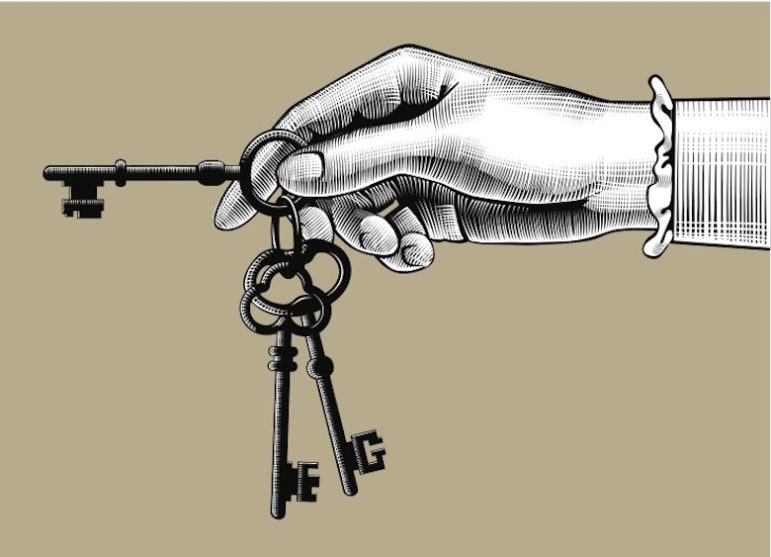
Reporting Tools & Tips
Here’s How to Turn Students into Sleuths in 15 Weeks
Rookies can become top-notch investigative reporters in a matter of months. Megan Clement rounded up tips for GIJN on how one professor in Chile gets it done.

Rookies can become top-notch investigative reporters in a matter of months. Megan Clement rounded up tips for GIJN on how one professor in Chile gets it done.

For our series about journalists’ favorite tools, we spoke with Joel Konopo of Botswana’s INK Centre for Investigative Journalism. He told GIJN’s Olivier Holmey all about how he uses satellite images to expose corruption, Cryptomator to encrypt sensitive files, and lots more.

So you’ve got a great investigation — now you just need to get people to read it. Here are seven types of beginnings that can hook readers into your story, from starting with a detail to beginning with a revelation.

Three reporters who have worked with survivors of child abuse shared advice on how to build trust with sources, take care of their well-being, and connect with survivor communities. Brenna Daldorph rounded up their tips for GIJN.

A documentary producer, a BBC reporter, and a human rights researcher shared eight steps toward gathering and using user-generated content for investigations at the recent Global Investigative Journalism Conference in Hamburg. Here’s Charlotte Alfred for GIJN on how it’s done.

Search engines only show a small fraction of the content that is actually available online. Leonie Kijewski highlights four tips on finding databases that can give you all the info that Google won’t, based on journalist Albrecht Ude’s presentation at the recent Global Investigative Journalism Conference in Hamburg.

Investigative reporters have a bit of a reputation for being troublemakers — both outside and inside their newsrooms. Sometimes, this can get in the way of their work. In his new book “Investigative Journalism: A Survival Guide,” David Leigh gives sensible advice for those who wish to not only get along with their bosses, but to see their stories published.
Curiosity fuels investigations, and there’s no monopoly on who can be curious. Citizens can investigate, and they do. GIJN provides some great examples below. This GIJN guide aims to help non-journalists investigate even more. The sections teach the techniques used by investigative journalists.
This guide is created to encourage Indigenous investigative journalists and to provide empowering tips and tools. Developed collaboratively by the Global Investigative Journalism Network (GIJN) and the Native American Journalists Association (NAJA), the guide explores eight key topics.The entries include background information, examples of investigative work, suggestions for stories, and resources for information. This guide […]

Do you know how to use TweetDeck to copy someone else’s Twitter list, then tailor it to your own needs? How about using it to search Instagram? Even if you’ve been using TweetDeck for years, you may still learn a trick or two from this comprehensive guide by Bellingcat investigator and trainer Charlotte Godart.

The legal system constantly produces information on the behavior of powerful people and entities. Based on his latest research, law expert Roy Shapira has unpacked for GIJN how investigative reporters can use the full potential of legal sources for better reporting.

For our series about journalists’ favorite tools, we spoke with Fabiola Torres of Salud Con Lupa. She told GIJN’s Gaelle Faure all about the tools that help her carry out cross-border investigations into public health, including tools to find data as well as to analyze and visualize it.

Sometimes, the best way to tell a story is to take a bird’s eye view. Here’s how Storybench editor Aleszu Bajak did this by recreating a GIF of Chennai’s disappearing Lake Puzhal reservoir. Check out his process and code, which could be used for countless other animations — to show, say, dam collapses, deforestation, forest fires, and more.

Sharing is caring. The Financial Times created templates for different types of digital stories and has now shared them on GitHub so that other newsrooms can adapt them.
This GIJN resource page aims to encourage more investigative reporting about the climate crisis. In Part 1, we begin with articles that provide concrete suggestions for investigative projects. In Part 2, we have collected challenging commentaries on how the media has handled climate change and what it should be doing better. In Part 3, we […]

There are many ways to measure impact — but you don’t need to do it all on your own. Here are six impact measurement frameworks appropriate for media makers and funders with various needs and approaches, selected by Media Impact Funders.

Christopher Booker’s “The Seven Basic Plots” provides a useful set of frameworks. It’s a book about fictional storytelling, but you will find the same structures recurring in longform and investigative work, writes Paul Bradshaw.

When it comes to digital security, what does a journalist from West Africa, a Syrian journalist based in Turkey, and a French journalist on a reporting trip to Kashmir have in common? Answer: Very little. While they all need to protect their data, their communications, and their sources, they must each do this in different ways that are adapted to the context, explains Grégoire Pouget of the Paris-based nonprofit Nothing2Hide.

If you read “The Case of Jane Ponytail,” published in The New York Times in 2018, you’re likely to remember it. The award-winning story recounted the life and death of Song Yang, a Chinese woman who came to the United States with dreams of becoming an American citizen, but who ended up dying after falling from a building during a raid on the illicit massage parlor where she was employed as a sex worker. Now you can read the story with annotations by Dan Barry, explaining how he crafted the heart-rending narrative.

Charitable and nonprofit organizations have a lot to gain from adopting certain aspects of successful business models, and they should start with treating stakeholders as customers, argues Philip Piletic of CustomerThink.

For the very first story in our new series about journalists’ favorite tools, we spoke with Emmanuel Freudenthal, a freelance investigative reporter based in Nairobi. He told GIJN’s Gaelle Faure all about how he uses virtual tools like GPS Tracks and Gmail Snooze and physical tools like plane-tracking antennas and good old motorbikes.

You don’t need a million casual readers — just 1,000 committed ones. And there are signs that the “1,000 true fans” theory holds approximately true across a wide range of journalism enterprises — sometimes it’s actually a thousand; other times it’s 400, 1,500, or 5,000.

Crowdsourcing is a powerful tool for journalism. It can help fuel reporting, provide answers, and engage community participation. Jess Ramirez, who works as an engagement reporting fellow at ProPublica, lists the questions you can ask yourself when approaching an engagement project.

If you’re an OSINT investigator or use OSINT in any of your work, it’s impossible to ignore Twitter as a collection source. Here’s how to get the most out of it by organizing your searches on a TweetDeck dashboard.

Every investigative journalist encounters moments of doubt. Neil Bedi, an investigative reporter at the Tampa Bay Times, shares the set of rules his team followed to survive the toughest reporting challenges while reporting their Pulitzer-nominated series “Heartbroken.”

In a digital world where it’s become easy to fake an identity — through low-cost websites, fabricated LinkedIn resumes, or even AI-created profile photos — the usual signals are increasingly garbage. Mike Caulfield cautions against trying to decipher cheap signals, and instead look for signs that use the network properties of the web.

GIJN recently hosted a webinar with Paul Myers, a leading international expert in online investigation. More than 300 people from approximately 70 countries joined as Myers, who works for the BBC and is a big favorite at GIJN’s conferences, shared his tips on the best tools and strategies for digging up information about people. This tipsheet is an overview of some of the techniques he shared.

How do you track cryptocurrency transactions? Brenna Smith, an undergraduate researcher at UC Berkeley’s Human Rights Investigations Lab, who specializes in investigating disinformation and the illicit use of cryptocurrencies, has created a tutorial using Izz ad-Din al-Qassam Brigades’ bitcoin funding campaign as a case study to show you how.